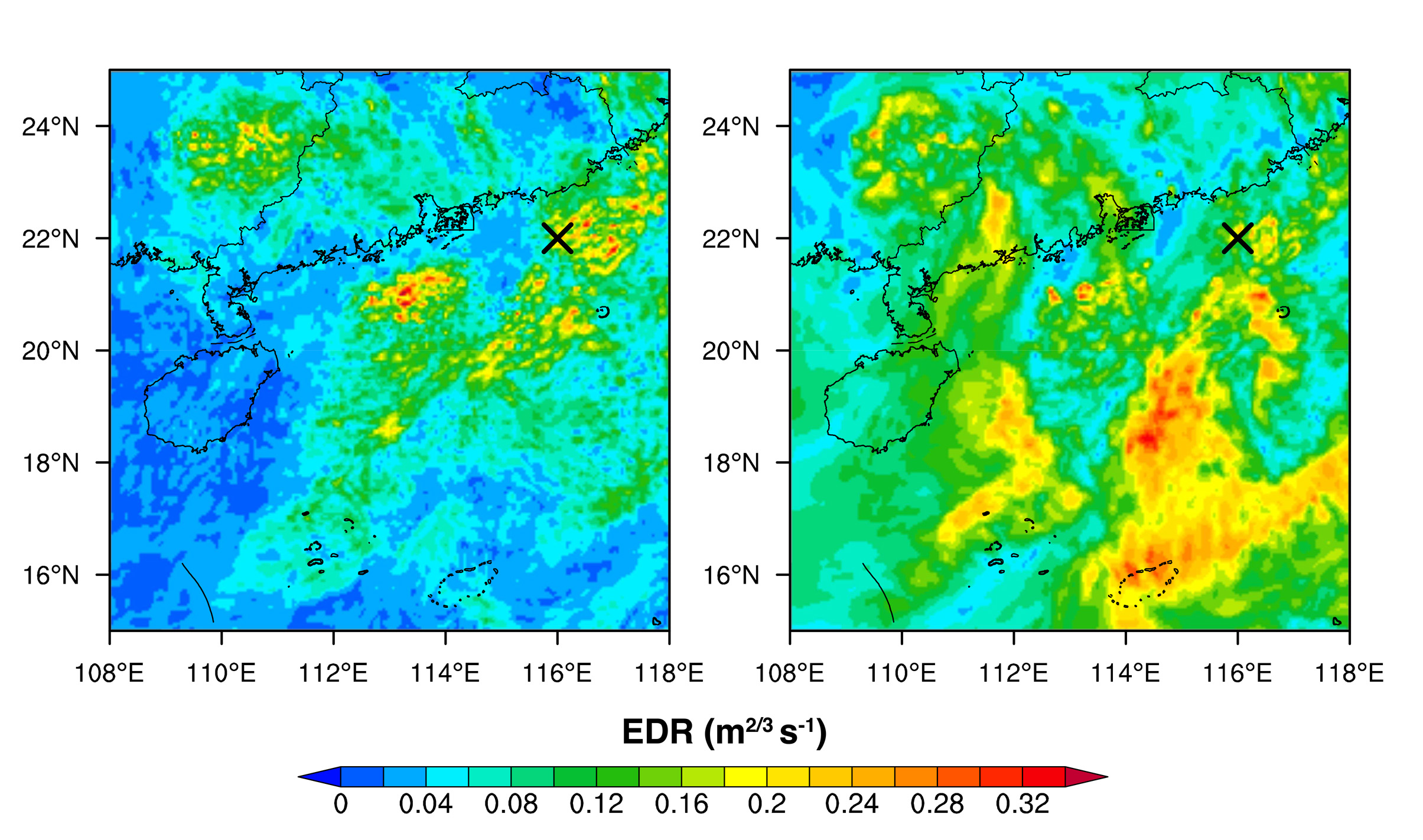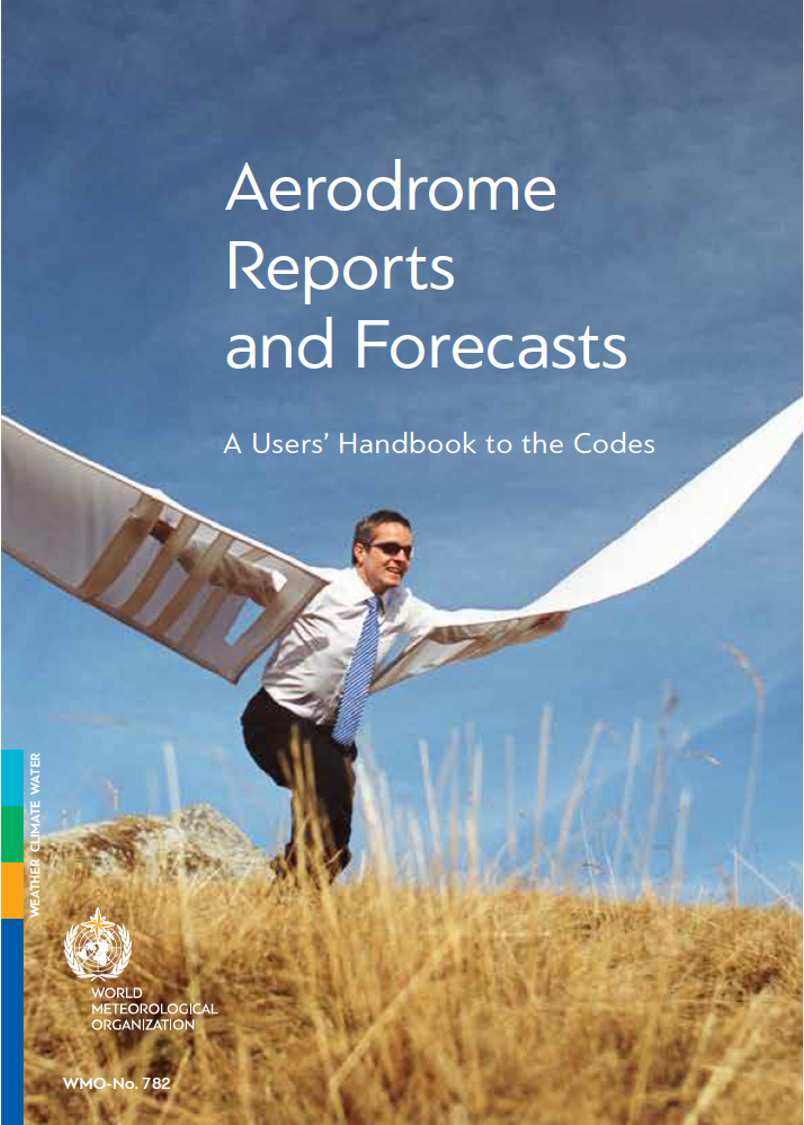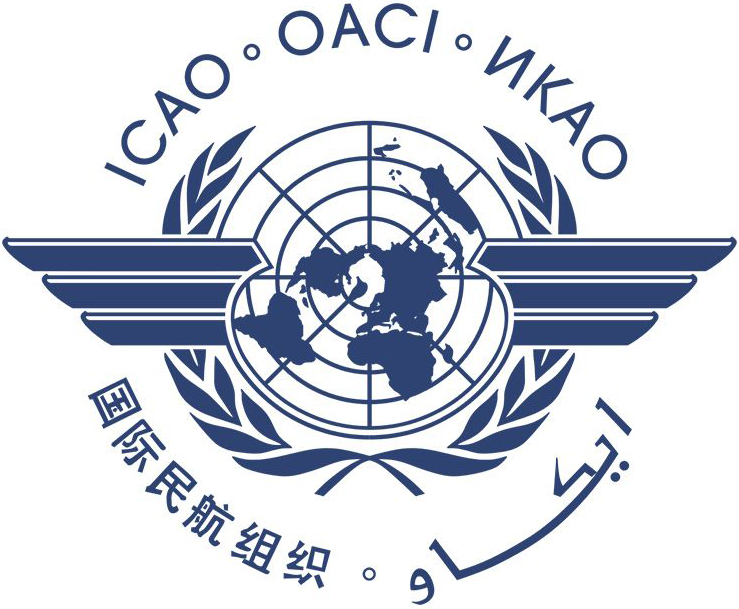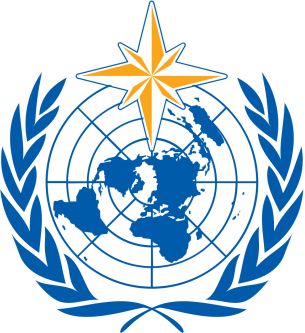Aviation | Resources | Newsletters | 2022-1

Newsletter Issue 1/2022 (June 2022)
Jump to:
- Foreword by the Chair of WMO Standing Committee on Services for Aviation
- Outcomes of the Second Meeting of the Standing Committee on Services for Aviation (SC-AVI-2)
- Analysis of the 2021 Global Survey on Gender Equality in Aeronautical Meteorology
- Outcomes of the 2022 Aeronautical Meteorology Scientific Webinars
- Latest news on Phase 2 of the Aviation Research and Development Project (AvRDP2)
- Expectations for the Second Session of the Services Commission (SERCOM-2)
- Update to WMO-No. 782, Aerodrome Reports and Forecasts: A Users' Handbook to the Codes
- News from the ICAO Secretariat
- News from the WMO Secretariat
- Upcoming WMO meetings and events
- Coming up next time
Foreword by the Chair of WMO Standing Committee on Services for Aviation
 Hello Friends and welcome to June’s edition of the WMO Services for Aviation newsletter.
Hello Friends and welcome to June’s edition of the WMO Services for Aviation newsletter.
‘It’s a busy time’ is probably a much-overused term but as part of the WMO Services Commission family the Standing Committee on Services for Aviation (SC-AVI) is in the midst of a particularly busy 6-month period - more details on all the action can be found in the articles that follow.
For me, the most exciting and positive aspect of this period is that we are now beginning to be able to meet in-person once again although learning the lessons of the all-virtual COVID world, it's going to be more important than ever to balance the benefits of in-person meetings with the impacts on people’s time, cost and environmental sustainability. Good planning and imaginative organisational thinking will be key!
From an aviation industry perspective, capacity is once again 'on the up' and so, whilst operationally these remain very challenging times, it will be interesting to see how the implementation of ICAO’s Global Air Navigation Plan now moves forward and what the impacts are likely to be on the pull-through of our supporting meteorological and environmental science and technologies.
Interesting times but here’s hoping you enjoy this edition.
Ian Lisk
United Kingdom Met Office
Chair of WMO Standing Committee on Services for Aviation (SC-AVI)
Outcomes of the Second Meeting of the Standing Committee on Services for Aviation (SC-AVI-2)
Submitted by the Greg Brock, WMO Secretariat
The SC-AVI-2 meeting was convened as a hybrid meeting (in-person and online) from 29 March to 1 April 2022. The meeting was an opportunity to discuss and coordinate the activities of the Standing Committee since the SC-AVI-1 meeting held in December 2020, to address issues of relevance including the operating plans of the SC-AVI subsidiary bodies and collaboration with partners such as ICAO (International Civil Aviation Organization), and to plan and coordinate future work. To conclude discussions on several items, an Addendum to the SC-AVI-2 meeting was convened (online) on 27 April 2022.
The Standing Committee formulated a total of five (5) decisions, which concerned the approval of the operating plans of ET-ETC (Expert Team on Education, Training and Competency), ET-MHS (Expert Team on Aeronautical Meteorological Hazards Science) and ET-CCV (Expert Team on the Impacts of Climate Change and Variability on Aviation), the approval of the establishment of AG-VSA (Advisory Group on Volcanic Science for Applications), and the disbanding of TT-LTP (Task Team on the update to the Long-Term Plan for Aeronautical Meteorology, LTP-AeM). The Standing Committee also formulated four (4) actions, which concerned the update to LTP-AeM, the development of a communications package associated with qualification and competency requirements and a risk register for the operating plans of SC-AVI subsidiary bodies, and arrangements for the SC-AVI-3 meeting.
Additionally, the Standing Committee formulated five (5) recommendations, each containing draft recommendations or decisions for the Services Commission, Executive Council and/or Congress, which concerned proposed updates to WMO guidance material addressing service delivery and cost recovery (WMO-Nos. 732 and 904), a proposed update to the terms of reference of SC-AVI, a proposed amendment to the Technical Regulations (WMO-No. 49), Volume I, General Meteorological Standards and Recommended Practices and the Compendium of WMO Competency Frameworks (WMO-No. 1209) addressing aeronautical meteorological personnel qualification and competency requirements, and a plan of action for the two-stage discontinuation of the Technical Regulations (WMO-No. 49), Volume II, Meteorological Service for International Air Navigation.
More detailed information on the outcomes of SC-AVI-2, including the Final Report, Addendum No. 1 and Executive Summary, is available here.
The next meeting of the Standing Committee, namely SC-AVI-3, is tentatively scheduled for Q3 or Q4 2023 as a full, in-person meeting.
Analysis of the 2021 Global Survey on Gender Equality in Aeronautical Meteorology
Submitted by Stéphanie Wigniolle and Adriana Oskarsson, WMO Secretariat in consultation with Claudia Ribero, SC-AVI Thematic Coordinator for Gender Mainstreaming
 Further to the article that appeared in the last newsletter (Issue 2/2021), WMO is pleased to announce that the analytical assessment of the 500+ responses to the 2021 global survey on gender equality in aeronautical meteorology is nearing completion. The Standing Committee on Services for Aviation (SC-AVI) Thematic Coordinator for Gender Mainstreaming, Claudia Ribero, with the assistance of other SC-AVI members as well as Lisa Vitols (Canada) and the WMO Secretariat is compiling a report that will be published in the coming months as part of the WMO Aeronautical Meteorology (AeM) SERIES of publications. The report will provide detailed information on the findings and observations stemming from the survey response and will include a series of conclusions and recommendations to help WMO, SC-AVI and others concerned devise strategies to increase the involvement of women in the aeronautical meteorology domain and to promote them to higher positions of responsibility at the national and international level. One of the main findings from the survey is that a fair portion of female personnel in the aeronautical meteorology domain have experienced difficulties because of their gender. On a more positive note, another finding shows that the number of women in this domain has been increasing in recent years, which makes the female personnel generally younger than the male one.
Further to the article that appeared in the last newsletter (Issue 2/2021), WMO is pleased to announce that the analytical assessment of the 500+ responses to the 2021 global survey on gender equality in aeronautical meteorology is nearing completion. The Standing Committee on Services for Aviation (SC-AVI) Thematic Coordinator for Gender Mainstreaming, Claudia Ribero, with the assistance of other SC-AVI members as well as Lisa Vitols (Canada) and the WMO Secretariat is compiling a report that will be published in the coming months as part of the WMO Aeronautical Meteorology (AeM) SERIES of publications. The report will provide detailed information on the findings and observations stemming from the survey response and will include a series of conclusions and recommendations to help WMO, SC-AVI and others concerned devise strategies to increase the involvement of women in the aeronautical meteorology domain and to promote them to higher positions of responsibility at the national and international level. One of the main findings from the survey is that a fair portion of female personnel in the aeronautical meteorology domain have experienced difficulties because of their gender. On a more positive note, another finding shows that the number of women in this domain has been increasing in recent years, which makes the female personnel generally younger than the male one.
Notification of the publication of the report on the survey will appear via the news feed section of the WMO Services for Aviation website.
Outcomes of the 2022 Aeronautical Meteorology Scientific Webinars
Submitted by Stéphanie Wigniolle and Adriana Oskarsson, WMO Secretariat
 In November 2017, an in-person Aeronautical Meteorology Scientific Conference (AeroMetSci-2017) was convened in Toulouse, France by the World Meteorological Organization (WMO), Météo-France and other co-sponsors. Due to the unforeseen and unprecedented impact of the COVID-19 pandemic on international travel, the WMO had to postpone the next physical AeroMetSci Conference from 2021 to 2024.
In November 2017, an in-person Aeronautical Meteorology Scientific Conference (AeroMetSci-2017) was convened in Toulouse, France by the World Meteorological Organization (WMO), Météo-France and other co-sponsors. Due to the unforeseen and unprecedented impact of the COVID-19 pandemic on international travel, the WMO had to postpone the next physical AeroMetSci Conference from 2021 to 2024.
In the meantime, in order to maintain community interest and engagement, WMO decided to conduct a series of web-based seminars (‘webinars’) in June 2022 to showcase some of the latest state-of-the-art scientific and technological advances taking place in aeronautical meteorology. Further webinars are expected to follow in 2023. In advance of a physical AeroMetSci Conference and while international travel remains subdued, the AeroMetSci Webinars are intended to serve to promote awareness within and stimulate collaboration across national meteorological services and others involved in the provision and use of meteorological service for international air navigation, with a particular focus on key meteorological hazards of concern to aviation. In addition, the Webinars can help inform WMO’s advice to the International Civil Aviation (ICAO), for example in respect of the hazardous weather information service (HWIS) concept and industry efforts to mitigate the effects of and adapt to a changing climate.
The WMO Services Commission (SERCOM) Standing Committee on Services for Aviation (SC-AVI), through its Expert Team on Aeronautical Meteorological Hazards Science and with the support of the Expert Team on the Impacts of Climate Change and Variability on Aviation amongst others, was responsible for leading the planning, preparation and conducting of the June 2022 AeroMetSci Webinars and for reporting on the outcomes to SERCOM and others concerned.
The theme of the June 2022 AeroMetSci Webinar was: Scientific and technological innovation in observation and forecast of severe convection to enable service delivery transformation and improve aviation safety.
The AeroMetSci Webinar was conducted across multiple WMO regions, through three sessions (multiple time zones), each consisting of two hours of pre-recorded presentations and a one-hour live panel discussion, involving renowned experts and agencies from across the aeronautical meteorology community, and international aviation organizations/associations and others from the international aviation industry.
Presentations addressed the challenge that forecasting significant convection and its impact on aviation has presented for decades. Innovative techniques or methodologies such as variable resolution atmospheric models, enhanced nowcasting systems, blending of observations/nowcast/forecast data, emerging statistical approaches and machine-learning applications were presented. Moreover, an overview of several case studies based on the use of an ensemble prediction system or probabilistic forecast techniques was provided. Some speakers also dedicated their presentations to the work done in collaboration with national aviation stakeholders about the integration of meteorological data into ATM (air traffic management) systems aiming at better anticipating the impact of significant convection on their operations. Each session's programme included a presentation about how convection may evolve due to climate change. Finally, airlines - through IATA - were given the opportunity to express their future requirements for en-route meteorological hazards including convection.
The live panel discussions gave the opportunity for attendees to share their opinions on the future ICAO HWIS concept, which raised many questions in terms of implementation and methodologies for blending global, regional and local data into a global system. Other questions posed were considering very specific technical topics such as machine-learning model training and synthetic (simulated) weather radar data. It was also often asked whether regional and/or seasonal variations have been observed in the outputs of such systems and if they were transposable to other hazardous phenomena such as low visibility. Outputs of the webinars will include a final report comprising an overview of the presentations and a summary of the panel discussions as well as recommendations to help guide or direct future work and preparations for a physical AeroMetSci Conference.
Access to the AeroMetSci Webinars that were held in June 2022 across the WMO regions, including the recordings of all the presentations and panel discussions, is available via the following links:
- WMO RA II (Asia) and RA V (South-West Pacific) held on 7 June 2022.
- WMO RA I (Africa) and RA VI (Europe) held on 8 June 2022.
- WMO RA III (South America) and RA IV (North America, Central America and the Caribbean) held on 9 June 2022.
Latest news on Phase 2 of the Aviation Research and Development Project (AvRDP2)
Submitted by Stéphanie Wigniolle, WMO Secretariat
AvRDP2 is the second phase (2021-2025) of an Aviation Research and Development Project, a project of the World Weather Research Program, led by the WMO Research Board (RB) with the Services Commission (SERCOM) Standing Committee on Services for Aviation (SC-AVI) as a close partner linking WMO with ICAO and other aviation stakeholders to ensure the project is steered in the direction of the global air traffic management vision, as conveyed in the ICAO Global Air Navigation Plan (GANP).
A key concept in the GANP is trajectory-based operations (TBO), which requires fit-for-purpose streams of observed and forecast meteorological data of high temporal and spatial resolution that are suitably updated, along the entire flight trajectory. AvRDP2 focuses on scientific advancement and capacity development in observation, forecasting, and warning of significant convection and associated hazards, including improvement in nowcast and model forecast blending technics or probabilistic forecast. It aims at demonstrating benefits of a gate-to-gate use of this advanced aeronautical meteorological information in the aviation operations environment.
In support of the key research areas of AvRDP2, WMO has implemented a Letter of Agreement (LoA) with the Hong Kong University of Science and Technology (HKUST) to study convection induced turbulence (CIT) associated with significant convection using cloud-resolving numerical weather prediction (NWP) model or a combination of NWP and Machine Learning technology.
The study covered by this LoA comprises three stages and aims at:
(1) Evaluating optimal configurations of a variable-resolution NWP model for predicting convection induced turbulence (CIT), and
(2) Developing deep learning (DL) models for the prediction of CIT based on NWP results and observation data.

Figure: Estimation of Eddy Dissipation Rate (EDR) based on the variable-resolution NWP model (MPAS) simulation on 21 May 2020. Left: computed EDR based on the conventional second-order structure function method which considers only horizontal variability of the flow. Right: estimated EDR based on the scale-similarity reconstruction of Chow et al. (2005). The black cross marks the location of the reported CIT incident.
Since the signature of the LoA, in October 2021, HKUST has been conducting activities as part of Stage 1 of the study, in close collaboration with the Hong Kong Observatory (HKO). A preliminary case study has been identified and deeply analysed in terms of the ability and performance of the Model for Prediction Across Scales (MPAS) in simulating the CIT encountered on that day (21 May 2020). The initial setup of the model was good at simulating the general distribution of convection. In addition, the impacts of the numerics (e.g. numerical scheme) and physics (cumulus parametrization, cloud microphysics, horizontal turbulence) were analysed on this first case study. Next steps will consist in finding data/cases to verify the better CIT estimation method, in quantifying performance of several setups with satellite or other observations, and in explaining mechanisms for some dramatic differences. Then the study will move forward to considering ensemble/probabilistic forecast.
In 2021, AvRDP2 established the steering body of the project, i.e. the Scientific Steering Committee (SSC). Experts from RB/WWRP and SERCOM/SC-AVI form part of this SSC. In addition, these experts worked towards the establishment of a group of aviation users and stakeholders that would assist for the aforementioned purposes. Special attention was paid to the domain of activity of the potential users’ representative selected, so that all phases of flight, as in the gate-to-gate concept, would be represented. This group, called the Community Advisory Group (CAG), serves as a satellite to the SSC. The CAG currently comprises representatives from IATA, IFALPA and several other relevant agencies. Attention is presently being paid by the SSC and the CAG to the selection, for the project purposes, of routes crossing climatologically convective areas (e.g. ITCZ), trans-oceanic and trans-continental routes and both long- and short/medium-haul flights.
In parallel to the continuation of the study undertaken by the HKUST, the SSC is finalizing the science plan for the project, following the consultation process with and advice from the Community Advisory Group.
More information on the progress of AvRDP2 will appear in future newsletters.
Expectations for the Second Session of the Services Commission (SERCOM-2)
Submitted by the Greg Brock, WMO Secretariat
The Services Commission (SERCOM) is the parent body of the Standing Committee on Services for Aviation (SC-AVI). Following a reform of WMO’s governance in 2019, it is one of just two intergovernmental technical commissions of the Organization. (Prior to 2019 there were eight (8) intergovernmental technical commissions.) SERCOM convenes sessions on a biennial basis.
The next session of SERCOM, namely SERCOM-2, is expected to take place in a hybrid mode (in-person and online) from 17 to 21 October 2022. The SERCOM-2 session will precede a Second Session of the Infrastructure Commission (INFCOM-2), which is expected to take place also in a hybrid mode between 24 and 28 October 2022.

The presidents of SERCOM and INFCOM are also expecting to convene a Joint Technical Conference (TECO) between these two sessions, i.e. on 22 and 23 October 2022, to consider the SERCOM and INFCOM joint response to the ‘Early Warning, Early Action’ task that the United Nations Secretary-General, António Gutteres, set WMO during the World Meteorological Day ceremony held on 23 March 2022, where everyone on Earth should be protected by early warning systems for weather extremes and climate change within the next five years.
In addition to considering this ambitious task set by the UNSG Gutteres, the SERCOM-2 session will address recommendations arising from the SERCOM subsidiary bodies, especially the Standing Committees including the recommendations formulated during SC-AVI-2 referenced in the article above. Based on these recommendations, SERCOM-2 will formulate decisions and resolutions that are internal to the technical commission as well as recommendations containing draft decisions and draft resolutions that will be submitted for the consideration of the Executive Council or Congress. Insofar as the SC-AVI-2 outcomes are concerned, SERCOM-2 is expected to endorse each of the five (5) SC-AVI-2 recommendations that were formulated.
More detailed information on the SERCOM-2 session, including working documentation, will be made available by WMO in due course via this link (once activated).
Update to WMO-No, 782, Aerodrome Reports and Forecasts: A Users’ Handbook to the Codes
Submitted by Greg Brock, WMO Secretariat
 WMO has recently published an update to its publication titled Aerodrome Reports and Forecasts: A Users' Handbook to the Codes (WMO-No. 782). The 2022 update brings the Handbook into line with the latest (2021) editions of the WMO Technical Regulations (WMO-No. 49), Volume II and ICAO Annex 3, Meteorological Service for International Air Navigation.
WMO has recently published an update to its publication titled Aerodrome Reports and Forecasts: A Users' Handbook to the Codes (WMO-No. 782). The 2022 update brings the Handbook into line with the latest (2021) editions of the WMO Technical Regulations (WMO-No. 49), Volume II and ICAO Annex 3, Meteorological Service for International Air Navigation.
The Handbook is available on the WMO e-Library here in the English language. Other language versions (specifically French, Spanish and Russian) will be available in due course.
For a comprehensive list of all WMO's regulatory and non-regulatory publications in the aeronautical meteorology domain, please visit this link.
 News from the ICAO Secretariat
News from the ICAO Secretariat
Submitted by Jun Ryuzaki, Technical Officer, Meteorology, ICAO
Transition of METP Chair: Mr. Michael Pat Murphy resigned the Chairperson of the ICAO Meteorology Panel (METP) in May 2022, after his taking a new position in the NextGen Weather Program in the United States’ Federal Aviation Administration (FAA). Mr. Murphy was nominated as the United States METP Member in 2017 and, since then, he had taken various important roles in the group, including the Rapporteur of the Working Group on Meteorological Information and Service Development (WG-MISD). And in June 2021, at the fifth meeting of the panel (METP/5), he was elected as the panel’s new Chair. His fair and enthusiastic leadership based on his professional expertise in aeronautical meteorology brought the panel a lot of achievements, including the successful introduction of space weather information services, implementation of meteorological data exchange in IWXXM, and the building of basic concept of hazardous weather information service (HWIS). Following Mr. Murphy’s resignation, the Deputy Chair of METP, Mr. William Maynard (Canadian METP Member), has taken up the role as the acting Chair. Mr. Maynard’s long years of experience in aeronautical meteorology and in ICAO activities will lead the panel to further successful development of the global standards for advanced meteorological information services to support aviation safety and efficiency.
ICAO Assembly – the 41st Session to be held in September/October 2022: The ICAO Assembly, the organization’s sovereign body, will hold its 41st Session in Montreal (hybrid format) from 27 September to 7 October 2022, to establish the global policy of the Organization for the upcoming next triennium period (2023 – 2025), inviting all 193 Contracting States and a large number of international organizations, including WMO. The session will review the entire ICAO work programme and discuss further developments, including the update of Global Air Navigation Plan (GANP) and climate change issues. Further details on ICAO A41 can be found here.
 News from the WMO Secretariat
News from the WMO Secretariat
Submitted by Greg Brock, WMO Secretariat
Discontinuation of WMO-No. 49, Volume II: As reported in the last Services for Aviation Newsletter (Issue 2/2021), WMO is undertaking necessary steps to discontinue the Technical Regulations (WMO-No. 49), Volume II, Meteorological Services for International Air Navigation, in response to outcomes of the Sixteenth Session of the Commission for Aeronautical Meteorology (CAeM-16) in 2018 and Eighteenth World Meteorological Congress (Cg-18) in 2019. A consultant has been assisting WMO's Standing Committee on Services for Aviation (SC-AVI) in the development of a 'plan of action' for the discontinuation of WMO-No. 49, Volume II. At time of writing (June 2022) it is expected that WMO-No. 49, Volume II will be discontinued in two stages. Stage 1 will entail the discontinuation of Parts I and II of WMO-No. 49, Volume II by the end of 2023 since they effectively reproduce ICAO Annex 3. Stage 2 will entail the discontinuation of Parts II and IV of WMO-No. 49, Volume II once material of continuing relevance has been incorporated into the Procedures for Air Navigation Services - Meteorology (PANS-MET) (Doc 10157) of the International Civil Aviation Organization (ICAO), provisionally in the 2026 timeframe. The referred 'plan of action' will be reviewed by the Second Session of the WMO Services Commission (SERCOM-2) in October 2022 ahead of consideration at the Nineteenth World Meteorological Congress (Cg-19) in May/June 2022.
WMO/ICAO working arrangements: In other news, the WMO Secretariat and ICAO Secretariat, with the assistance of a consultant, are making renewed progress towards an update to the working arrangements between WMO and ICAO. The WMO/ICAO working arrangements were first signed in 1954 and last updated in 1963 (!). The updated working arrangements are expected to take the form of a 'Memorandum of Understanding' and will define the individual and joint roles and responsibilities of the Organizations, particularly in the context of aeronautical meteorology. It is anticipated that the updated working arrangements will be signed by the heads of the two Organizations within the next 12 months.
Upcoming WMO meetings and events
Note: All information given here is subject to change.
Seventy-Fifth Session of the Executive Council (EC-75), 20 to 24 June 2022, Hybrid (Geneva and Online)
Second Session of the Services Commission (SERCOM-2), 17 to 21 October 2022, Hybrid (Geneva and Online)
Joint Technical Conference (TECO) of the Services Commission and Infrastructure Commission, 22 and/or 23 October 2022, Hybrid (Geneva and Online)
Second Session of the Infrastructure Commission (INFCOM-2), 24 to 28 October 2022, Hybrid (Geneva and Online)
WMO, UK Met Office and partners, Aviation Meteorology Training Seminars, November 2022, Online
Coming up next time...
In the next issue of the newsletter readers can look forward to:
- Highlights of EC-75 and expectations for EC-76 and Cg-19
- Highlights of SERCOM-2, INFCOM-2 and a Joint Technical Conference (TECO)
- Expectations for an Eighth WMO/IUGG International Workshop on Volcanic ash (IWVA-8)
...and more!
CLICK HERE to read previous newsletters
CLICK HERE to return to our homepage
